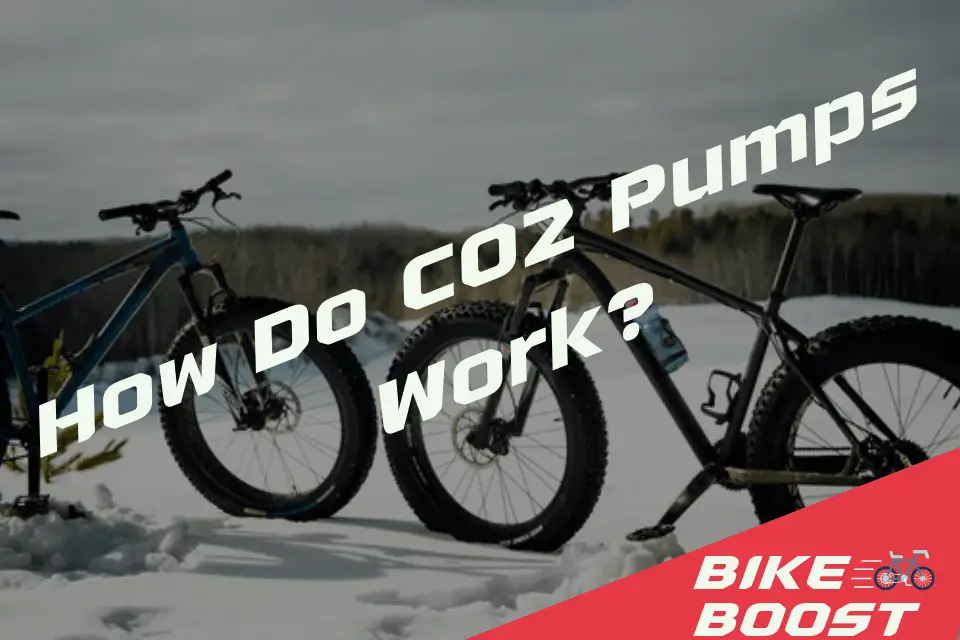Are you curious about the inner workings of those small CO2 cartridges that can swiftly inflate your bike tires? Perhaps you’re also wondering how they differ from traditional bike pumps or if you can use a bike pump on a car tire. In this article, we’ll provide a comprehensive explanation in simple terms, covering both CO2 cartridges and pumps and how they contribute to efficient bike tire inflation.
Key Takeaways:
- CO2 cartridges work by releasing compressed CO2 gas into bike tires, rapidly inflating them due to the pressure differential.
- CO2 cartridges offer advantages such as quick inflation, portability, and ease of use, making them ideal for emergency situations.
- While a bike pump can be used on a car tire, it’s not the most efficient method, and using a car air compressor or a CO2 inflator designed for car tires is recommended.

Understanding CO2 Cartridges
CO2, short for carbon dioxide, is a gas found in the air we breathe. When compressed, it becomes a powerful and rapid inflator for bike tires. But how does it actually work?
The Science Behind CO2 Inflators
When you activate a CO2 inflator, the compressed CO2 is released into the tire, causing rapid inflation. This speed is attributed to the pressure difference between the compressed gas inside the cartridge and the atmospheric pressure outside. The greater the pressure differential, the faster the inflation process.
CO2 cartridges come in various sizes, ranging from pocket-sized options to larger ones capable of inflating multiple tires. The cartridge size determines the amount of CO2 it can hold and, consequently, the level of inflation it can provide.
Advantages of CO2 Inflators
One of the key benefits of using CO2 inflators is their incredible speed. With a CO2 cartridge, you can inflate a flat tire within seconds. This is particularly advantageous during bike rides when time is of the essence or if you prefer not to spend valuable time manually pumping up your tires.
Portability is another advantage of CO2 inflators. Due to the small and lightweight nature of the cartridges, they can be easily carried in a bag or even in your pocket. This ensures you’re always prepared for unexpected flat tires, regardless of your location.
Using a CO2 Inflator
Using a CO2 inflator is a straightforward process, but a few considerations should be kept in mind. Firstly, ensure you have the appropriate cartridge size for your tire to avoid wastage or overinflation.
To use the inflator, attach it to the valve on your tire. The inflator will have a mechanism for piercing the cartridge, so simply screw it onto the valve and press the button to release the CO2. It’s essential to note that once the CO2 is released, it cannot be stopped. Thus, ensure you have the desired amount of air in the tire before starting the inflation process. You can estimate the required air by referring to the recommended pressure indicated on the tire’s sidewall.
After reaching the desired tire pressure, remove the inflator from the valve and dispose of the used cartridge. CO2 cartridges are single-use, so it’s wise to carry a spare cartridge or a bike pump for any further adjustments that may be necessary.
Can a Bike Pump Be Used on a Car Tire?
Now, let’s address the question: can a bike pump be used on a car tire? The answer is yes, it’s possible. However, it’s not the most efficient or practical method. Car tires typically require higher pressure levels compared to bike tires, and inflating them using a bike pump can be time-consuming and laborious.
For car tire emergencies, it’s advisable to use a car air compressor or a CO2 inflator specifically designed for car tires. These inflators are typically larger and capable of providing greater air volume per cartridge, making the inflation process faster and easier.
Conclusion
CO2 cartridges and pumps offer convenient and swift solutions for inflating bike tires. They are portable, easy to use, and can inflate a tire within seconds. Ensure you select the appropriate cartridge size and familiarize yourself with the recommended tire pressure to ensure optimal inflation.
Are CO2 cartridges suitable for long-term tire inflation, or are they primarily for emergencies?
CO2 cartridges are primarily designed for emergency use or quick inflation on the go. They may not be suitable for long-term tire inflation as they lack a pressure gauge, making it difficult to fine-tune the tire pressure accurately.
How do I choose the right size CO2 cartridge for my bike tires?
The size of the CO2 cartridge depends on the volume of air needed to inflate your specific bike tires. Smaller cartridges are typically sufficient for road bikes, while larger ones may be required for mountain bikes or fat bikes with wider tires. It’s recommended to consult your bike manufacturer’s guidelines or seek advice from a local bike shop to determine the appropriate cartridge size for your tires.
Can CO2 cartridges be reused, or are they single-use only?
CO2 cartridges are generally designed for single-use only. Once a cartridge has been punctured and its contents released, it cannot be refilled or reused. It’s advisable to carry spare cartridges when cycling to ensure you have an extra one available if needed.
Is it possible to overinflate a tire using a CO2 cartridge? What precautions should I take?
Yes, it is possible to overinflate a tire using a CO2 cartridge since they do not have a pressure gauge for precise measurement. To avoid overinflation, it’s recommended to inflate the tire in short bursts and periodically check the tire pressure using a separate pressure gauge. This will help you achieve the desired pressure without exceeding it.
Are CO2 inflators compatible with all types of bike valves, or are there specific ones they work with?
CO2 inflators are compatible with most bike valves, but it’s important to ensure you have the appropriate valve attachment. Most inflators come with a universal head that can work with both Presta and Schrader valves, which are the two common types of bike valves. However, it’s always a good idea to double-check the compatibility and ensure the inflator you choose supports the valve type on your bike tires.
Andy is an avid cyclist who enjoys nothing more than a ride out in the hills. Competing in track, road, time trial and mountain bike events in the past, he prefers slower rides out with his family these days.
